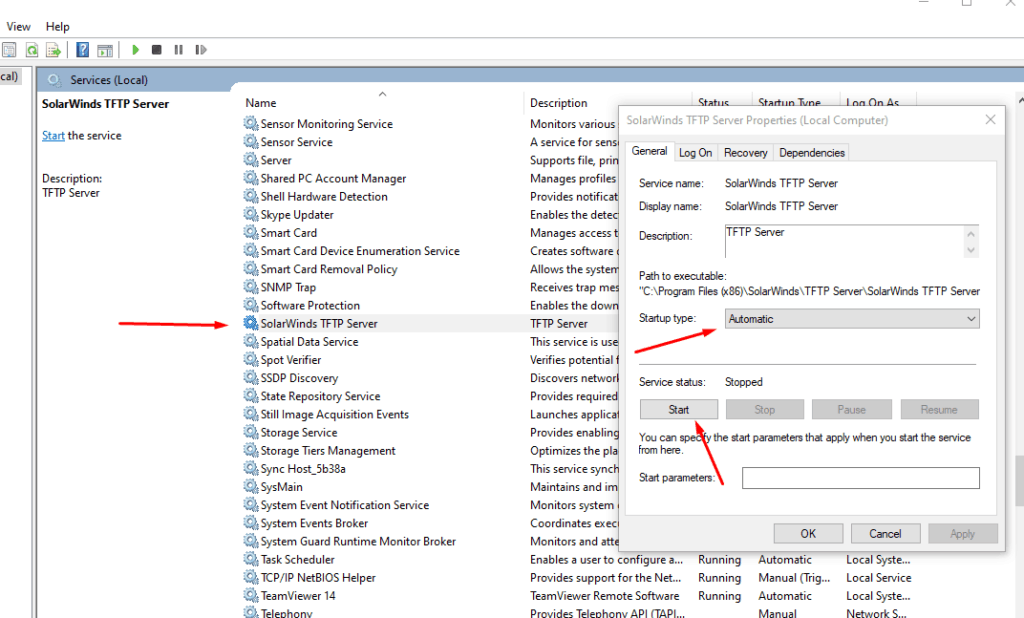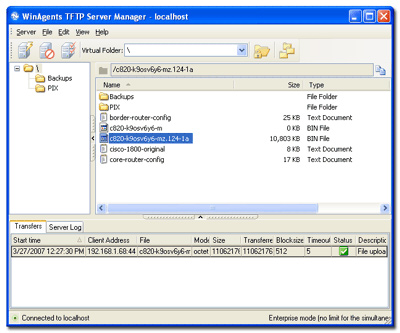
Legacy protocols are present to support operations of legacy applications and services. Altering the existing security setting may create the following impact in your network operations.Potential issues that may arise after applying the resolution.Step 4: Disable "(Trivial File Transfer Protocol) TFTP client"Step 5 : Click ok.
#Tftp client in windows windows#
Step 3: Click on "Turn Windows features on or off. Step 2: Navigate to programs and features.

Note: Whenever a filename is specified, care must be taken that the path should be relative to the TFTP_ROOT_DIRECTORY, i.e., only those files present under the root directory can be "put" into another machine. Java .TftpClientImpl SERVER localhost PORT 5000 COMMAND put SOURCE C:\test.html TARGET D:\test.html MODE netascii TIMEOUT 10000 When you want to transfer a file "test.html" present in "C:\" drive to the "D:\", the command would be like Java .TftpClientImpl SERVER host1 PORT 5000 COMMAND get SOURCE C:\test.html TARGET D:\test.html MODE netascii TIMEOUT 10000Īssume that the TFTP service is running in a Windows machine with the TFTP_ROOT_DIRECTORY set as "/". If you want to transfer a file "test.html" present in "C:\" to the destination machine. This parameter is used to specify the time until which the client will wait to receive the packets.Īssume that the TFTP service is running in "host1"(Windows machine) with a TFTP_ROOT_DIRECTORY as "/".
#Tftp client in windows zip#
For example, if the transferred file is a zip or image file, the mode of transfer has to be in "octet". Based on the type of the file being transferred, the value should be given. This parameter can take two values like " netascii" or " octet". When the value is not specified for this parameter, the target filename is the same as that of the source filename. The name in which the transferred file has to be stored, is given as the value to this parameter. If the TFTP_ROOT_DIRECTORY is set as "/" in Windows machines, then care has to be taken to specify the source and destination names starting with the drive name, where the file resides. In case of " put" operation, the file residing in the local machine where the TFTP client is running, has to be specified. In the case of " get" operation, the file residing in the host, where the TFTP server is running should be given as input. The source file name which has to be transferred has to be given as the input to the parameter.

It can either take values like " get" or " put", depending on whether the transfer of files is from server to client or vice versa, respectively. This is used to specify the port in which the TFTP server is running. This is used to specify the host in which the TFTP server is running. The usage of various parameters is given below. Java .TftpClientImpl SERVER (hostname) PORT (port number) COMMAND (get/put) SOURCE (filename)

Set the classpath to AdventNetTftp.jar present in /classes directory. To start the TFTP Client, the following steps has to be followed. The class TftpClientImpl is the WebNMS implementation of TftpClientAPI. For transferring the files, the TFTP Client has to be started in the machine from where you perform the file transfer operations.


 0 kommentar(er)
0 kommentar(er)
